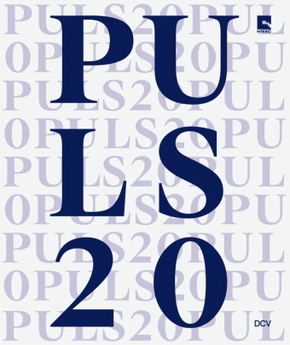PULS 20 - New Entries in the MNAC Collection - New Entries in the MNAC Collection
| Verlag | DCV Dr. Cantzsche |
| Auflage | 2024 |
| Seiten | 256 |
| Format | 28 cm |
| Gewicht | 1160 g |
| Artikeltyp | Englisches Buch |
| ISBN-10 | 3969122155 |
| EAN | 9783969122150 |
| Bestell-Nr | 96912215A |
PULS 20 vereint die wertvollsten Fundstücke einer gemeinschaftlichen Schatzsuche. Vertreter_innen der rumänischen Kunstszene und des Nationalmuseums für zeitgenössische Kunst (MNAC) in Bukarest haben sich zusammengeschlossen, um aus den unzähligen hochkarätigen Positionen Rumäniens Werke auszuwählen, die von herausragender Qualität sind und die Vielfalt der dortigen Kunstproduktion der letzten 50 Jahre widerspiegeln. 2020, zum 20-jährigen Jubiläum der Gründung des MNAC, hat diese Institution schließlich jene 180 Arbeiten angekauft, die in diesem Katalog abgebildet sind. PULS 20 ist damit in zweifacher Hinsicht ein einmaliges Dokument: Es ist gelungen, Schlüsselwerke der rumänischen Kunst zwischen zwei Buchdeckeln zusammenzubringen, und zugleich handelt es sich bei dieser Publikation um den Ertrag eines erfolgreichen kooperativen kuratorischen Prozesses, eines organischen Diskurses unterschiedlichster Akteur_innen. Damit wurde bewiesen, dass ein demokratischer Dialog in der Kunst n icht nur möglich, sondern auch überaus fruchtbar und daher notwendig ist. Für Neulinge in der zeitgenössischen rumänischen Kunst ebenso wie für Spezialist_innen ist dieser Katalog daher genau die richtige Wahl.
PULS 20 unites the most valuable finds from a communal treasure hunt. Exponents of the Romanian arts scene and representatives of the National Museum of Contemporary Art (MNAC) in Bucharest teamed up to review the oeuvres of countless eminent Romanian artists and select works of outstanding quality that reflect the diversity of the country's creative production over the past fifty years. In time for the celebrations of MNAC's twentieth anniversary in 2020, the institution acquired the 180 works reproduced in this catalogue. That makes PULS 20 a singular document in two respects: it gathers a selection of key works of Romanian art that is unprecedented in its breadth between the covers of a book; and it is the result of a successful cooperative curatorial process, an organic discourse involving a wide variety of participants, demonstrating that democratic dialogue in art is not just possible but also extraordinarily fruitful and indeed necessary. All in all, this catalogue is the p erfect choice both for newcomers to Romanian contemporary art and for specialists.

